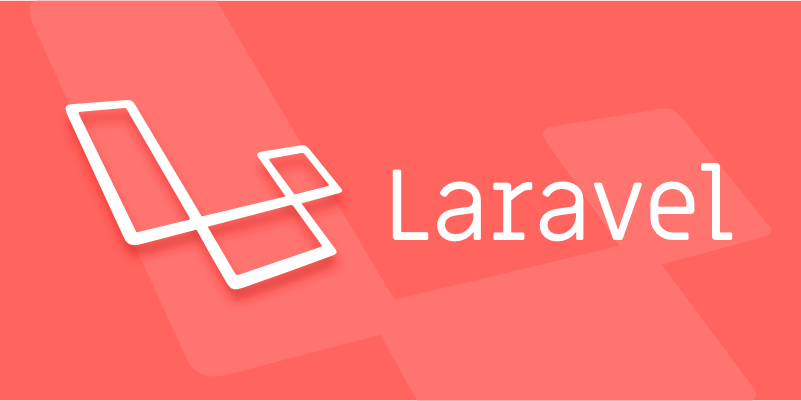Dependency injection (DI) improves code flexibility and testability by automatically resolving class dependencies in Laravel. Laravel uses service containers to automatically resolve dependencies for type prompts. For example, when a UserService or UserRepository type is declared in a controller constructor or method, the framework will automatically instantiate and pass in the corresponding object. Binding interfaces to specific implementations (such as through the service provider bind method) allows for flexible switching of implementation classes, suitable for different environments or test scenarios. The main advantages of using DI include loose coupling, easy testing and neat code; suitable for classes with external dependencies, maintenance or replacement implementations, avoiding simple or internal logical dependencies.

Dependency Injection (DI) in Laravel is a way to manage class dependencies automatically. Instead of manually creating or locating the objects a class needs, Laravel handles that for you behind the scenes. The main idea is that your classes don't have to worry about where their dependencies come from — they just receive them when needed.

How Dependency Injection Works in Laravel
Laravel uses its service container to resolve dependencies automatically. When you type-hint a class or interface in a method (like a controller constructor or a method), Laravel reads that hint and tries to instantiate the required class or fetch it from the container.
For example, if you have a UserService class used inside a controller:

class UserController extends Controller {
protected $userService;
public function __construct(UserService $userService) {
$this->userService = $userService;
}
} Here, Laravel sees that UserService is expected, so it creates (or retrieves) an instance and passes it in automatically.
This also works with methods like route closings or controller actions:

public function show(UserRepository $repo, $id) {
$user = $repo->find($id);
} In this case, Laravel resolves the UserRepository before calling the method.
Why Use Dependency Injection?
There are a few solid reasons Laravel makes DI easy:
- Loose coupling : Your classes don't need to know how to build their dependencies — just what they expect.
- Easier testing : You can swap real services with mocks or stubs easily.
- Cleaner code : No hardcoded dependencies or global looks like
new SomeClass()scattered everywhere.
It might feel a bit abstract at first, but once you get used to it, it's one of those tools you start missing when working without it.
Binding Interfaces to Implementations
One of the more powerful features of Laravel's container is mapping interfaces to concrete implementations. This lets you define behavior through an interface and swap out the actual class being injected based on environment or configuration.
You do this using service providers:
$this->app->bind(
'App\Contracts\UserRepository',
'App\Services\DatabaseUserRepository'
); Now whenever a class asks for UserRepository , Laravel will give it DatabaseUserRepository .
You could also bind different implementations depending on the app's needs — say, switching between a database and an API-based repository during development or testing.
When to Use It (and When Not To)
Use dependency injection when:
- A class has external dependencies (like services, repositories, or loggers).
- You want to make code easier to test or maintain.
- You're using interfaces and want to switch implementations.
Avoid overusing it when:
- The dependency is simple and unlikely to change.
- You're dealing with data or logic that's internal to the class itself.
- You're injecting things you don't actually use in the class — that's unnecessary noise.
Also, not every class needs to be resolved through the container. If it doesn't have complex dependencies or you don't plan to mock it in tests, plain instantiation ( new MyClass ) is totally fine.
So yes, Laravel makes dependency injection straightforward, especially with its automatic resolution and clean syntax. Once you understand how the container helps wire things together, it becomes a natural part of your workflow. Basically, that's all there is to it — no magic, just smart design.
The above is the detailed content of What is dependency injection in Laravel?. For more information, please follow other related articles on the PHP Chinese website!

Hot AI Tools

Undress AI Tool
Undress images for free

Undresser.AI Undress
AI-powered app for creating realistic nude photos

AI Clothes Remover
Online AI tool for removing clothes from photos.

Clothoff.io
AI clothes remover

Video Face Swap
Swap faces in any video effortlessly with our completely free AI face swap tool!

Hot Article

Hot Tools

Notepad++7.3.1
Easy-to-use and free code editor

SublimeText3 Chinese version
Chinese version, very easy to use

Zend Studio 13.0.1
Powerful PHP integrated development environment

Dreamweaver CS6
Visual web development tools

SublimeText3 Mac version
God-level code editing software (SublimeText3)

Hot Topics
 Creating Custom Validation Rules in a Laravel Project
Jul 04, 2025 am 01:03 AM
Creating Custom Validation Rules in a Laravel Project
Jul 04, 2025 am 01:03 AM
There are three ways to add custom validation rules in Laravel: using closures, Rule classes, and form requests. 1. Use closures to be suitable for lightweight verification, such as preventing the user name "admin"; 2. Create Rule classes (such as ValidUsernameRule) to make complex logic clearer and maintainable; 3. Integrate multiple rules in form requests and centrally manage verification logic. At the same time, you can set prompts through custom messages methods or incoming error message arrays to improve flexibility and maintainability.
 Working with pivot tables in Laravel Many-to-Many relationships
Jul 07, 2025 am 01:06 AM
Working with pivot tables in Laravel Many-to-Many relationships
Jul 07, 2025 am 01:06 AM
ToworkeffectivelywithpivottablesinLaravel,firstaccesspivotdatausingwithPivot()orwithTimestamps(),thenupdateentrieswithupdateExistingPivot(),managerelationshipsviadetach()andsync(),andusecustompivotmodelswhenneeded.1.UsewithPivot()toincludespecificcol
 Sending different types of notifications with Laravel
Jul 06, 2025 am 12:52 AM
Sending different types of notifications with Laravel
Jul 06, 2025 am 12:52 AM
Laravelprovidesacleanandflexiblewaytosendnotificationsviamultiplechannelslikeemail,SMS,in-appalerts,andpushnotifications.Youdefinenotificationchannelsinthevia()methodofanotificationclass,andimplementspecificmethodsliketoMail(),toDatabase(),ortoVonage
 Understanding Dependency Injection in Laravel?
Jul 05, 2025 am 02:01 AM
Understanding Dependency Injection in Laravel?
Jul 05, 2025 am 02:01 AM
Dependency injection automatically handles class dependencies through service containers in Laravel without manual new objects. Its core is constructor injection and method injection, such as automatically passing in the Request instance in the controller. Laravel parses dependencies through type prompts and recursively creates the required objects. The binding interface and implementation can be used by the service provider to use the bind method, or singleton to bind a singleton. When using it, you need to ensure type prompts, avoid constructor complications, use context bindings with caution, and understand automatic parsing rules. Mastering these can improve code flexibility and maintenance.
 Strategies for optimizing Laravel application performance
Jul 09, 2025 am 03:00 AM
Strategies for optimizing Laravel application performance
Jul 09, 2025 am 03:00 AM
Laravel performance optimization can improve application efficiency through four core directions. 1. Use the cache mechanism to reduce duplicate queries, store infrequently changing data through Cache::remember() and other methods to reduce database access frequency; 2. Optimize database from the model to query statements, avoid N 1 queries, specifying field queries, adding indexes, paging processing and reading and writing separation, and reduce bottlenecks; 3. Use time-consuming operations such as email sending and file exporting to queue asynchronous processing, use Supervisor to manage workers and set up retry mechanisms; 4. Use middleware and service providers reasonably to avoid complex logic and unnecessary initialization code, and delay loading of services to improve startup efficiency.
 Managing database state for testing in Laravel
Jul 13, 2025 am 03:08 AM
Managing database state for testing in Laravel
Jul 13, 2025 am 03:08 AM
Methods to manage database state in Laravel tests include using RefreshDatabase, selective seeding of data, careful use of transactions, and manual cleaning if necessary. 1. Use RefreshDatabasetrait to automatically migrate the database structure to ensure that each test is based on a clean database; 2. Use specific seeds to fill the necessary data and generate dynamic data in combination with the model factory; 3. Use DatabaseTransactionstrait to roll back the test changes, but pay attention to its limitations; 4. Manually truncate the table or reseed the database when it cannot be automatically cleaned. These methods are flexibly selected according to the type of test and environment to ensure the reliability and efficiency of the test.
 Choosing between Laravel Sanctum and Passport for API authentication
Jul 14, 2025 am 02:35 AM
Choosing between Laravel Sanctum and Passport for API authentication
Jul 14, 2025 am 02:35 AM
LaravelSanctum is suitable for simple, lightweight API certifications such as SPA or mobile applications, while Passport is suitable for scenarios where full OAuth2 functionality is required. 1. Sanctum provides token-based authentication, suitable for first-party clients; 2. Passport supports complex processes such as authorization codes and client credentials, suitable for third-party developers to access; 3. Sanctum installation and configuration are simpler and maintenance costs are low; 4. Passport functions are comprehensive but configuration is complex, suitable for platforms that require fine permission control. When selecting, you should determine whether the OAuth2 feature is required based on the project requirements.
 Implementing Database Transactions in Laravel?
Jul 08, 2025 am 01:02 AM
Implementing Database Transactions in Laravel?
Jul 08, 2025 am 01:02 AM
Laravel simplifies database transaction processing with built-in support. 1. Use the DB::transaction() method to automatically commit or rollback operations to ensure data integrity; 2. Support nested transactions and implement them through savepoints, but it is usually recommended to use a single transaction wrapper to avoid complexity; 3. Provide manual control methods such as beginTransaction(), commit() and rollBack(), suitable for scenarios that require more flexible processing; 4. Best practices include keeping transactions short, only using them when necessary, testing failures, and recording rollback information. Rationally choosing transaction management methods can help improve application reliability and performance.






